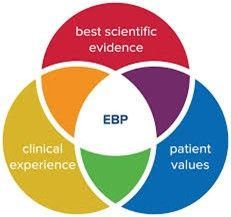The Autism Spectrum: 3 Challenges with Autism Communication
With youths on the autism spectrum, a challenge they all share is their autism communication. More interest, research and treatment is being focused on the youth on the autism spectrum. Whether a youth is silent and doesn’t function in school, or is a high achiever and a straight-A student in school, being on the autism spectrum gives them something in common. It’s their challenge with autism communication. In either diagnosing a youth on the spectrum, assessing, or treating a youth, the issue of how they relate to the world is an important characteristic which needs to be addressed.
For youths on the spectrum to function, to be part of the mainstream, they need to be able to communicate. Because autism communication is a symptom that is used to diagnose someone on the spectrum. It affects their functioning and ability to communicate with others.
What are the difficulties they experience?
Youths experiencing autism communication have deficits in social interaction. Here are three examples:
1. They can’t be involved in the give and take of conversation. When you meet a person on the street or in a store, you greet them and start up a chat about a topic. Fashion. Sports. Gossip. It lasts for a few minutes or so, maybe longer, and then finishes. But for the youth on the spectrum, the thought of conversation is foreign to them. Their inner world is more important to them. They may greet you, but don’t follow through with questions or statements. They need prodding, prompting to talk to. In some cases, with youths who are more non-verbal, this interaction doesn’t even occur. But they don’t have the skills to engage in talk, like a ping pong game where only one person hits the ball.
2. Their non-verbal behavior doesn’t match that of others. Being in their own internal world of pictures, words, and ideas, they don’t pay attention to how others respond. They may have the “autism stare” where they look through you but not at you. They might make facial squints, twitches, or other movements which are comfortable to them but seem out of place to conversation. If most people were to do that, you would think they were rude. But for the youth on the spectrum, don’t know that what they’re doing is not socially acceptable.
3. They have difficulty in developing relationships. There is more of a need to talk about themselves. They don’t have a connection to others. It’s not a matter of being selfish, just that they can’t know that other people may have different views than they do. If they ask questions or talk about a subject, it’s their subject.
How to teach families to improve the spectrum youth’s ability to reduce autism communication?
It takes a lot of structured time and effort. And it starts with the eyes. Remind youth to look at you (or close to your eyes). Ask them questions about themselves. Get them out of their cocoon. And role-play with them certain tasks you want them to do. Order at a restaurant. Play a game. Talk on the phone. Practice will help them develop the skills and positive reinforcement also helps. And if the youth is not verbal, help them with electronic devices to be their voice.
Praxes offers training on Interventions for Youths on the Autism Spectrum. For more information about our training courses, please contact us.




